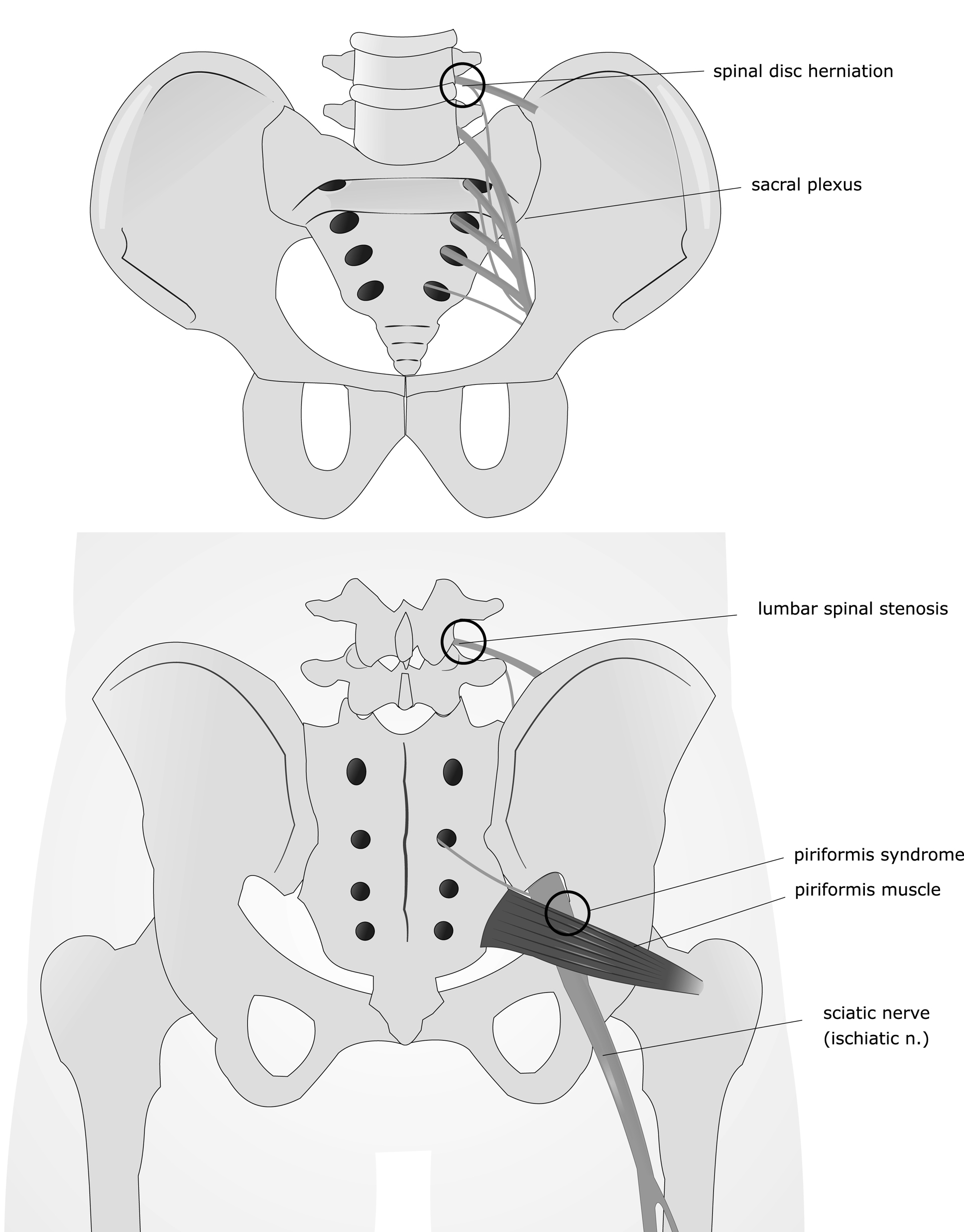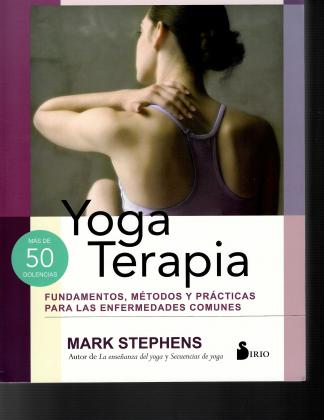The Most Complete Textbook on Yoga Therapy
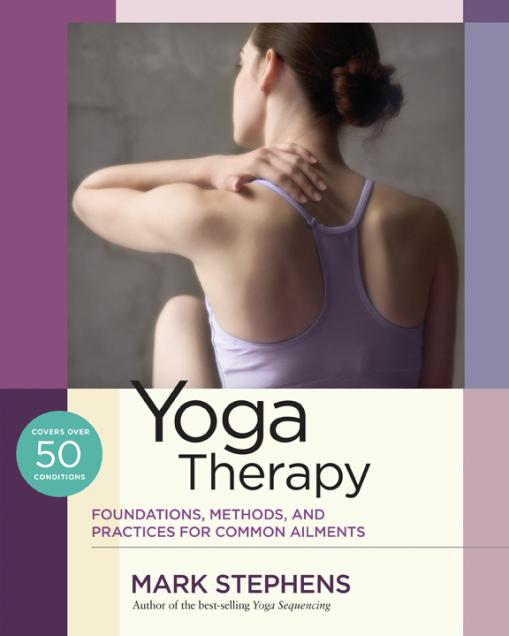
Paperback, 720 pages
Publisher: North Atlantic Books
ISBN: 9781623171070
Dimensions: 8 x 10
Also in Kindle format
DESCRIPTION
From the best-selling author of Teaching Yoga, Yoga Sequencing, and Yoga Adjustments comes this essential resource for learning how to adapt yoga practices to best accommodate and heal a wide array of common injuries and ailments. Surveying historical writings on yoga, ayurveda, and scientific medical approaches to health and healing, Mark Stephens distills the received wisdom of ancient and modern practices for more insightful and practical application in today's world. He applies these insights to healing musculoskeletal injuries, promoting a healthy reproductive system, and addressing mental, emotional, and behavioral difficulties. With each health condition, Stephens applies yoga to the most recent evidence-based practices for healing, offering an integral place for yoga in integrative health practices.
Yoga Therapy is a practical manual for yoga teachers, yoga therapists, and anyone interested in applying yoga to healing common ailments, offering a systematic approach of considering the nature of each health condition and the specific asanas, pranayamas, and meditations most helpful in healing it. Stephens invites yoga therapists, teachers and students to relate to health as a continuous, dynamic process of self-care in which the qualities of personal experience and social connectivity matter, while charting a path for integrating yoga with evidence-based health practices. He illustrates that how we live our lives—including our emotional states, nutrition, sleep, relationships, and sense of purpose—is reflected in our sense of balance (or imbalance) and well-being (or disease). Comprehensive, accessible, and informed by Mark Stephens’ decades of deep study, practice, and teaching, this will become an indispensable reference.
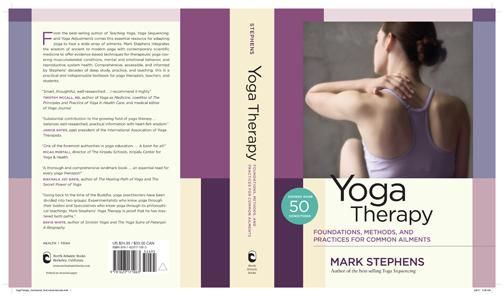
PRAISE FOR Yoga Therapy: Foundations, Methods, and Practices for Common Ailments
Janice Gates YT

A deep bow to Mark Stephens for this substantial contribution to the growing field of yoga therapy! Thoroughly grounded in yoga's historical and philosophical foundations, this book balances well-researched, practical information with heart-felt wisdom. From the insightful section on Healing and Curing to the practical applications of yoga therapy for a wide range of conditions, Mark skillfully conveys the truly integrative nature of yoga therapy. An essential resource for yoga therapists, clinicians and educators in the field!
– Janice Gates, past president, International Association of Yoga Therapists (IAYT), author of Yogini: The Power of Women in Yoga
David Gordon White YT

Going back to the time of the Buddha, yoga practitioners have been divided into two groups--Experimentalists who know yoga through their bodies and Speculatives who know yoga through its philosophical teachings. Mark Stephens' Yoga Therapy is proof that he has mastered both paths.
– David Gordon White, Author of Sinister Yogis and The Yoga Sutra of Patanjali: A Biography
Nichala Joy Devi

Yoga Therapy, a thorough and comprehensive landmark book, offers illuminating insight into Yoga, Yoga Therapy and the interface with western medicine. Along with Stephens’ generous offering of practical information, he espouses the attributes of kindness and compassion in yoga therapy practice, which although often overlooked, is indeed the very heart of yoga, itself. An essential read for every yoga therapist!
– Nischala Joy Devi, Yoga teacher and therapist; author, The Healing Path of Yoga and The Secret Power of Yoga
David Emerson YT

Mark Stephens' sober but optimistic assessment of the potential for yoga therapy inside the western medical model is a welcome addition. My hope is that the field will follow his well-informed guidance in the attempt to responsibly integrate these two models of health-care that have so much to offer each other because, ultimately, it is the patients that will benefit.
– David Emerson, Author of Trauma-Sensitive Yoga in Therapy and Director of Yoga Service, The Trauma Center at Justice Resource Institute
Timothy McCall
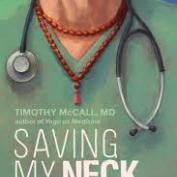
Yoga therapy is a big field, encompassing the entirety of yoga and its many practices along with aspects of Western medicine, Ayurveda, physiology, physical therapy, kinesiology, psychology, philosophy, spiritual development and more. No single volume can do it full justice, but Mark Stephens has done a yeoman's job to assemble much of the background information aspiring yoga therapists will need to understand. This book is smart, thoughtful and well-researched and doesn't shy away from presenting a strong — and sometimes provocative — point of view. I recommended it highly.
– Timothy McCall, MD, author, Yoga As Medicine, co-editor, The Principles and Practice of Yoga in Health Care, Medical Editor, Yoga Journal
Micah Mortelli YT

Mark’s capacity for conveying both the depth and the breadth of the yogic sciences are all the more powerful because of his commitment to practice. His works to date on teaching, sequencing and adjustments have already established him as one of the foremost authorities in yoga education. With the emergence of Yoga Therapy in recent years, as a powerful form of integrative healing, Mark now brings his scholar’s mind and practitioners wisdom to the field. A boon for all!
– Micah Mortali, director, The Kripalu Schools (School of Integrative Yoga Therapy, School of Yoga, School of Ayurveda), Kripalu Center for Yoga and Health
Barbara Dossey YT

This comprehensive textbook for yoga therapists offers an original synthesis of yoga practices with the insights of western medicine.
– Barbara Dossey, PhD, RN, AHN-BC, FAAN, HWNC-BC, Author of Holistic Nursing and Co-Director, International Nurse Coach Association
CONTENTS
Preface
Introduction: Yoga for Healing and Wholeness
Part 1: Theories, Principles, and Methods of Healing
Chapter 1: Yogic Sources
- Defining Yoga
- A Very Brief History of Yoga and Tantra
- Hatha Yoga Practices
Chapter 2: Ayurvedic Sources
- The Origins, Sources, and Development of Ayurveda
- Beyond the Atharaveda
- Ayurvedic Pioneers
- Caraka
- Susruta
- Vagbhata
- Underlying Philosophy and Principles of Ayurveda
- The Samkhya Philosophy of Consciousness and Constitution
- Tattvas, Gunas, and Organs
- Dhatus
- Tridosha: Vata, Pitta, Kapha
- Prana and Prana-Vayus
- Etiology: The Cause of Disease in Ayurvedic Theory
Chapter 3: Scientific Medical Sources
- A Brief History of Western Medicine
- From Mysticism to Scientific Method
- After the Greeks: Acivenna and Vesuvius
- Scientific Advances: From the Modern Period to the Present Day
Chapter 4: Integrating the Healing Arts and Sciences
- The Efficacy and Limitations of Scientific Medicine
- The Efficacy and Limitations of Holistic Medicine
- Healing and Curing: Towards and Integrative Approach
- Integrative Health in Practice
- Essential Considerations in Health and Healing
Chapter 5: Skin: The Integumentary System
- Superficiality
- Epidermis, Dermis, and Hypodermis
- Investing Deep Fascia
- Common Integumentary Pathologies
- Cultivating A Healthy Integumentary System
Chapter 6: Bones & Joints: The Skeletal System
- The Nature and Function of Bones
- Types of Bones
- Types of Joints
- Joint Stability and Movement
- Describing Anatomical Direction
- Movement in Planes of Motion
- Common Bone and Joint Pathologies
- Cultivating a Healthy Skeletal System
Chapter 7: Muscles: The Muscular System
- Types of Muscle
- The Musculoskeletal System
- The Feet and Ankles
- The Legs and Knee Joints
- The Pelvis and Hip Joints
- The Core
- The Spine
- The Shoulder Girdle
- The Arms and Elbows
- The Hands and Wrists
- Cultivating a Healthy Muscular System
Chapter 8: Nerves: The Nervous System
- Neurons
- The Central Nervous System
- The Peripheral Nervous System
- Sympathetic and Parasympathetic Systems
- Common Neurological Pathologies
- Cultivating a Healthy Neurological System
Chapter 9: Movement: Kinesiology and the Biomechanics of Movement
- Moving into Stillness
- The Nature of Human Movement
- Proprioception and Refining Movement
Chapter 10: Heart and Blood: The Cardiovascular System
- Heart and Soul
- The Heart and Circulation
- Common Heart Pathologies
- Cultivating a Healthy Heart
Chapter 11: Cleansing & Defending: The Lymphatic System
- Moving Fluids
- Lymphoid Tissues and Organs
- Natural Defense and Healing Systems
- Common Lymphatic Pathologies
- Cultivating a Healthy Lymphatic System
Chapter 12: Breathing: The Respiratory System
- Pneuma and the Renewal of Life
- The Organs of Respiration
- Types of Breathing
- Common Respiratory Pathologies
- Cultivating a Healthy Respiratory System
Chapter 13: Glands and Hormones: The Endocrine System
- Hormones and Communicators
- Endocrine Glands
- Pineal
- Pituitary
- Thyroid
- Parathyroid
- Thymus
- Pancreas
- Andrenal
- Ovaries
- Testes
- Common Endocrine Pathologies
- Cultivating a Healthy Endocrine System
Chapter 14: Digestion: The Digestive System
- How Much of You Is What You Eat?
- The Digestive Tract
- The Mouth and Throat
- The Teeth
- The Stomach
- The Small Intestine
- The Liver and Gallbladder in Digestion
- The Pancreas
- The Large Intestine
- Common Digestive Pathologies
- Cultivating a Healthy Digestive System
Chapter 15: Letting Go: The Urinary System
- Filtering
- The Kidneys
- The Bladder
- Common Urinary Pathologies
- Cultivating a Healthy Urinary System
Chapter 16: Ultimate Human Creativity: The Reproductive System
- Sex
- The Male Reproductive System
- The Female Reproductive System
- Fertilization and Human Development
- Common Reproductive Pathologies
- Cultivating a Healthy Reproductive System
Part 3 – Helping Others Heal with Yoga
Chapter 17: Integrity in Yoga Therapy
- What Distinguishes Yoga Teachers and Yoga Therapists?
- Clearly Defining Yoga Therapy
- A Yoga Therapy Scope of Practice
Chapter 18: Communication and Interaction in Yoga Therapy
- Guiding Principles in the Healing Relationship: Kriyas and Yamas
- Principles and Skills for Interacting with Students and Clients
- Developing Healing Communication Skills
- Mindful Listening
- Attentive Presence
- Directive Dialogue
- Non-Directive Dialogue
Chapter 19: Assessment and Planning Healing Practices
- Self- and Student-Assessments
- Interviewing and Assessing
- Step One: Personal History and Intention
- Step Two: Client Assessment
- Part 1: Issues in Assessing Current Conditions
- Part 2: Assessing Current Conditions Within the Yoga Therapy Scope of Practice
- Physical Asana Assessment
- Observing Students and Clients in Asanas
- Step One: Standing Observation
- Step Two: Asana Observation
- Basic Strength, Flexibility, and Balance Tests
- Strength Testing
- Flexibility Testing
- Balance Testing
- Static Balance Test
- Dynamic Balance Test
- Breathing and Pranayama Assessment
- Step Three: Developing a Shared Working Assessment
- Creating a Therapeutic Yoga Practice Treatment Plan
- Implementing a Therapeutic Yoga Practice Treatment Plan
Part 4 –Yoga Therapy Practices
Chapter 20: Asana Practices
- Introduction
- The Heart of Practicing Yoga Asanas
- The Bodymind, Somatics, and Personal Choices in Health and Healing
- The Essential Qualities of Asana Practice
- Sthira Sukham Asana: Steadiness, Ease, and Presence of Mind
- Tapas, Abhyasa, and Vairagya: Self-Disciplined Commitment, Perseverance, and Non-Attachment
- Ujjayi Pranayama: Basic Yogic Breathing
- Alignment Principles
- Energetic Actions
- Transitioning
- Vinyasa Krama: Wise & Gradual Progression in Sequencing Actions
Chapter 21: Pranayama Practices
- Introduction
- The Discovery and Development of Pranayama
- The Modern Science of Respiration
- Cultivating Basic Breath Awareness
- Refining the Flow of the Breath
- Puraka: The Inhalation
- Diaphragmatic Inhalation
- Coastal Inhalation
- Rechaka: The Exhalation
- Abdominal Exhalation
- Coastal Exhalation
- Ujjayi Pranayama: Basic Yogic Breathing
- Puraka: The Inhalation
- Deepening and Refining Pranayama Practices
- Vrtti Pranayama: Fluctualting Breath
- Sama Vrtti Pranayama
- Visama Pranayama
- Kumbhaka: Breath Retention
- Antara Kumbhaka
- Bahya Kumbhaka
- Viloma: Against the Grain
- Kapalabhati: Cultivating Light
- Bastrika: The Fiery Bellows Breath
- Sitala: Cooling Breath
- Anuloma and Pratiloma: Delicate Regulation of Breath
- Suryabheda: Stimulating Vitality
- Chandrabheda: Calming Energy
- Nadi Shodhana: Alternate Nostril Breathing
- Vrtti Pranayama: Fluctualting Breath
- Consciously Cultivating Energy
Chapter 22: Meditation Practices
- Introduction
- Patanjali’s Isolation Path: Pratyahara, Dharana, Dhyana
- Taking One Seat
- Six Guided Mediation Techniques
- One: Breath as Mantra
- Two: Acoustical Mantra
- Three: Counting
- Four: Chakras
- Five: Light
- Six: Mala
- When to Meditate
- Meditating Amid the Body and Breath
Part 5: Healing Common Conditions
Chapter 23: Healing Musculoskeletal Conditions
- Plantar Fasciitis
- Achilles Tendinitis and Tears
- Collapsed and Hypertonic Arches
- Ankle Sprains
- Shin Splints
- Anterior Cruciate Ligament (ACL)
- Medial Collateral Ligament (MCL)
- Patellar Subluxation
- Hip Bursitis
- Hamstring Strain
- Iliotibial Band Syndrome
- Femoral Neck Syndrome
- Strained Adductors
- Sacro-Iliac Joint
- Lordosis
- Kyphosis
- Scoliosis
- Neck Pain
- Frozen Shoulder
- Rotator Cuff
- Shoulder Impingement
- Carpal Tunnel Syndrome
- Elbow Tendonitis
- Arthritis
- Fibromyalgia
- Osteoporosis
Chapter 24: Mental, Emotional, and Behavioral Conditions
- Alzheimer’s Disease
- ADD/ADHD
- Substance Abuse
- Depression
- Generalized Anxiety Disorder
- Insomnia
Chapter 25: Reproductive System Issues
- Infertility
- Endometriosis
- Menstrual Cycle & Pre-Menstrual Syndrome
- Pregnancy & Post-Partum Reintegration
- Menopause
- Male Prostatitis
- Erectile Dysfunction
Part 6: Epilogue
The Future of Yoga Therapy
Glossary of Asanas, Asana Indications, and Asana Contraindications
Endnotes
Bibliography
Index
About the Author
